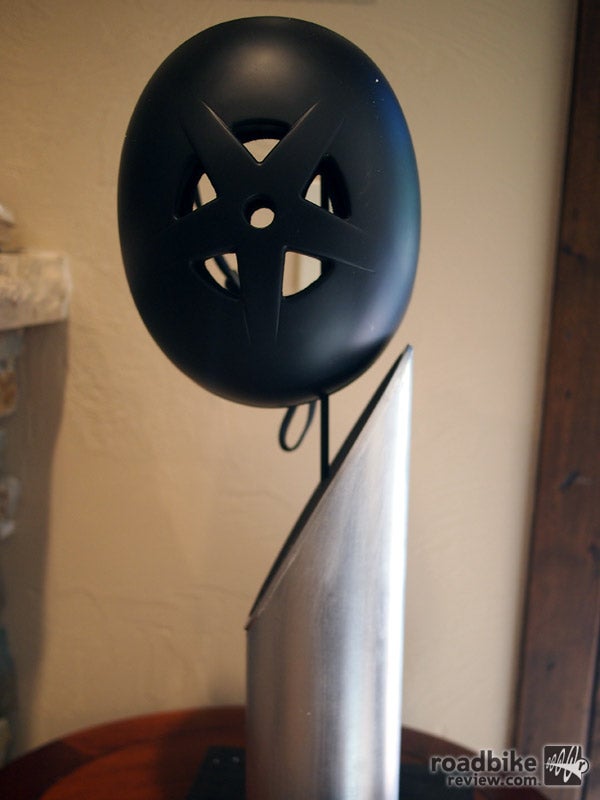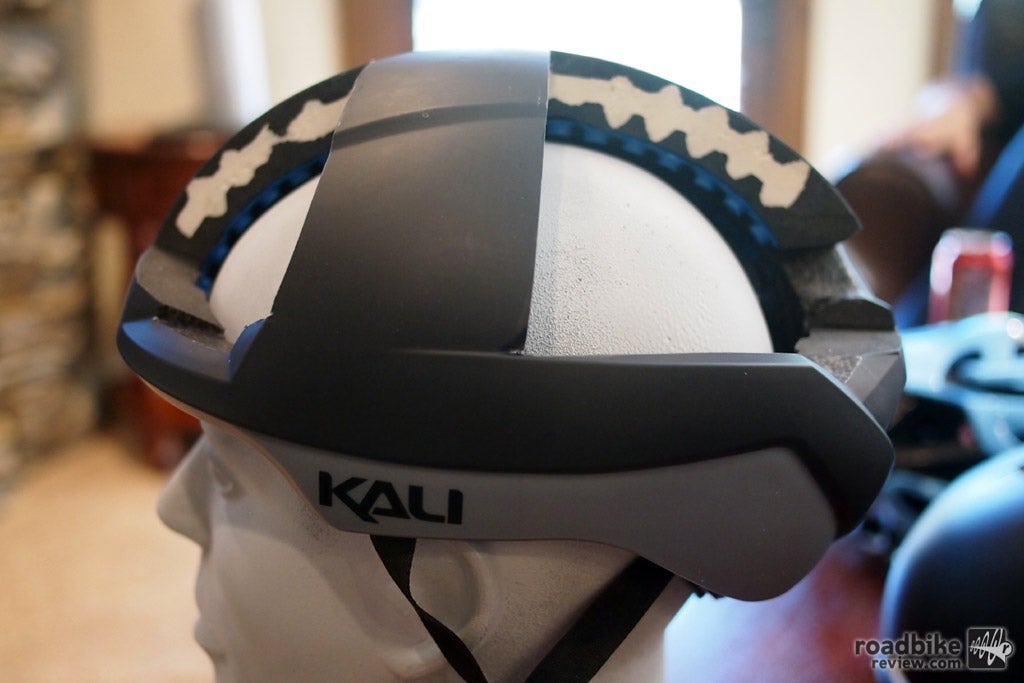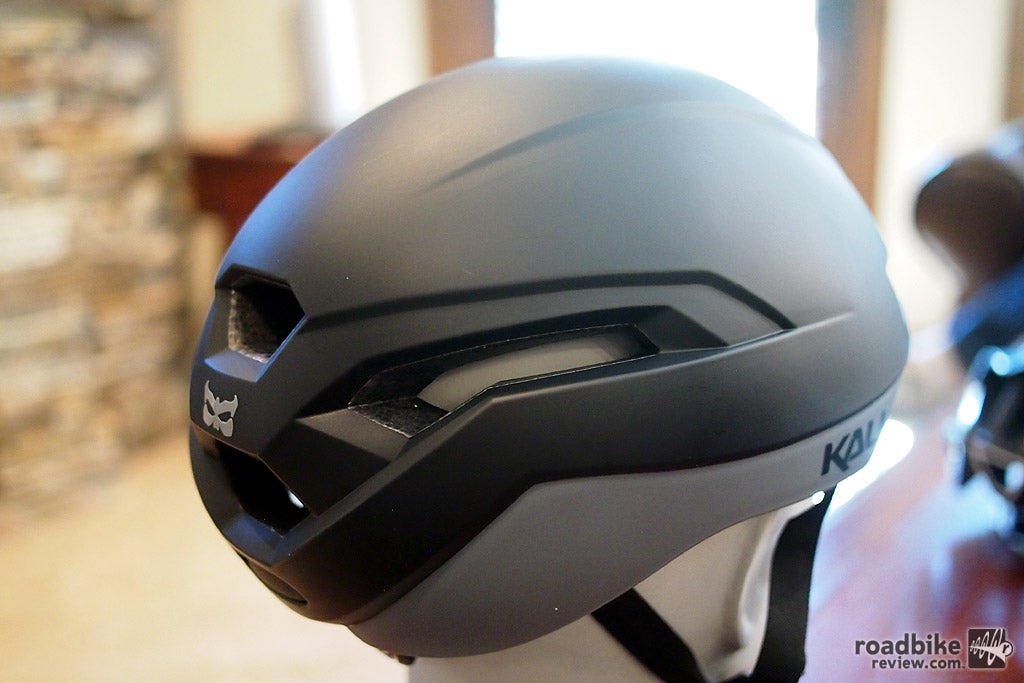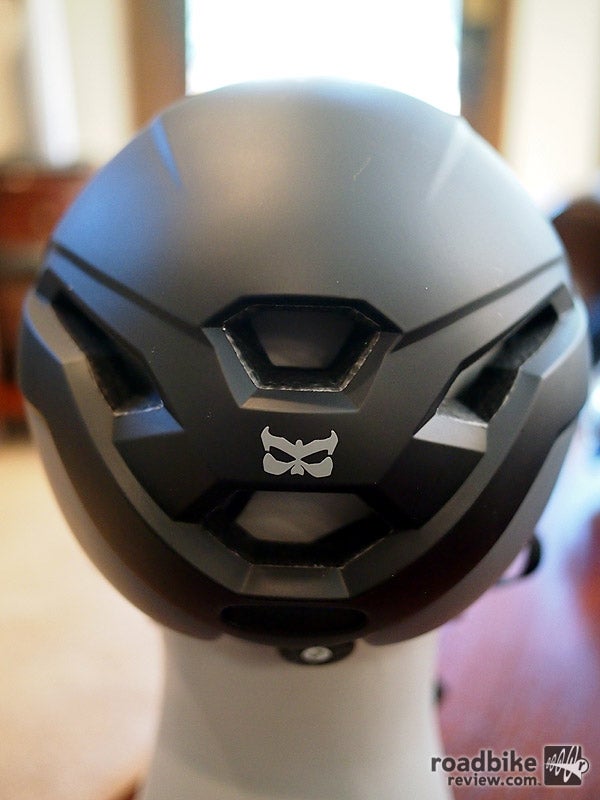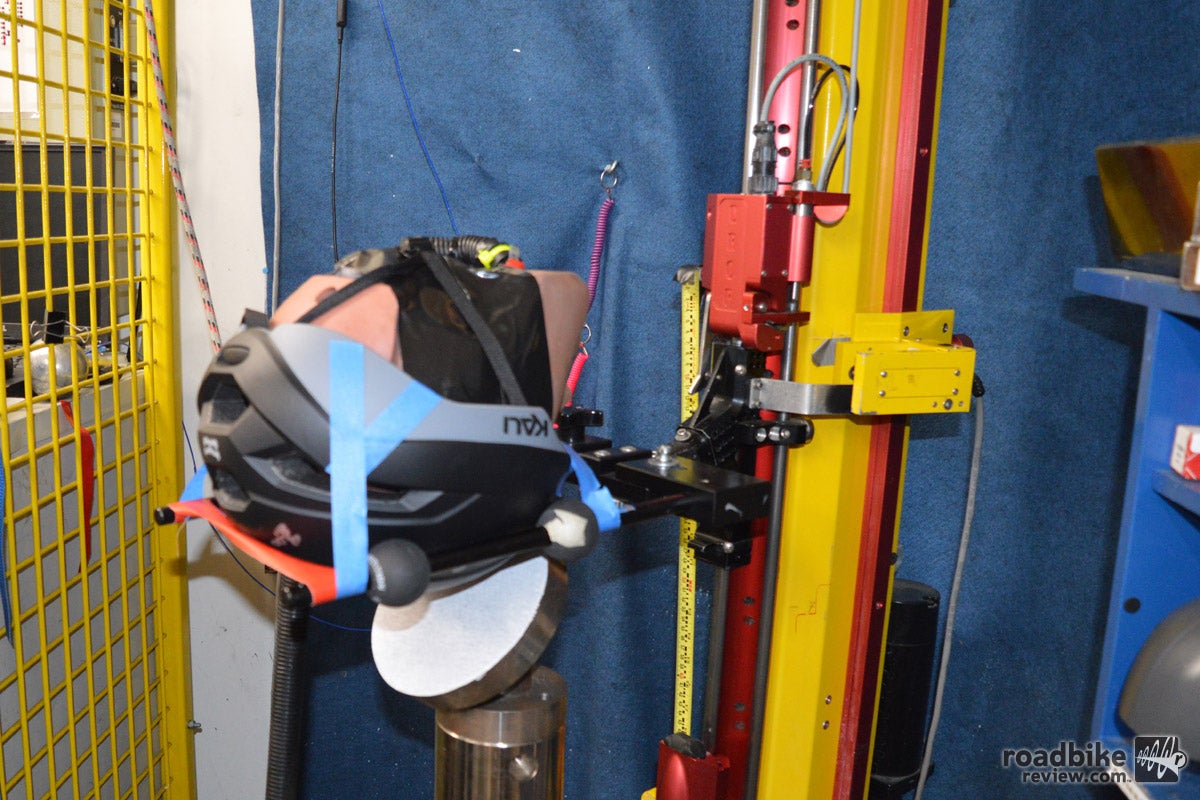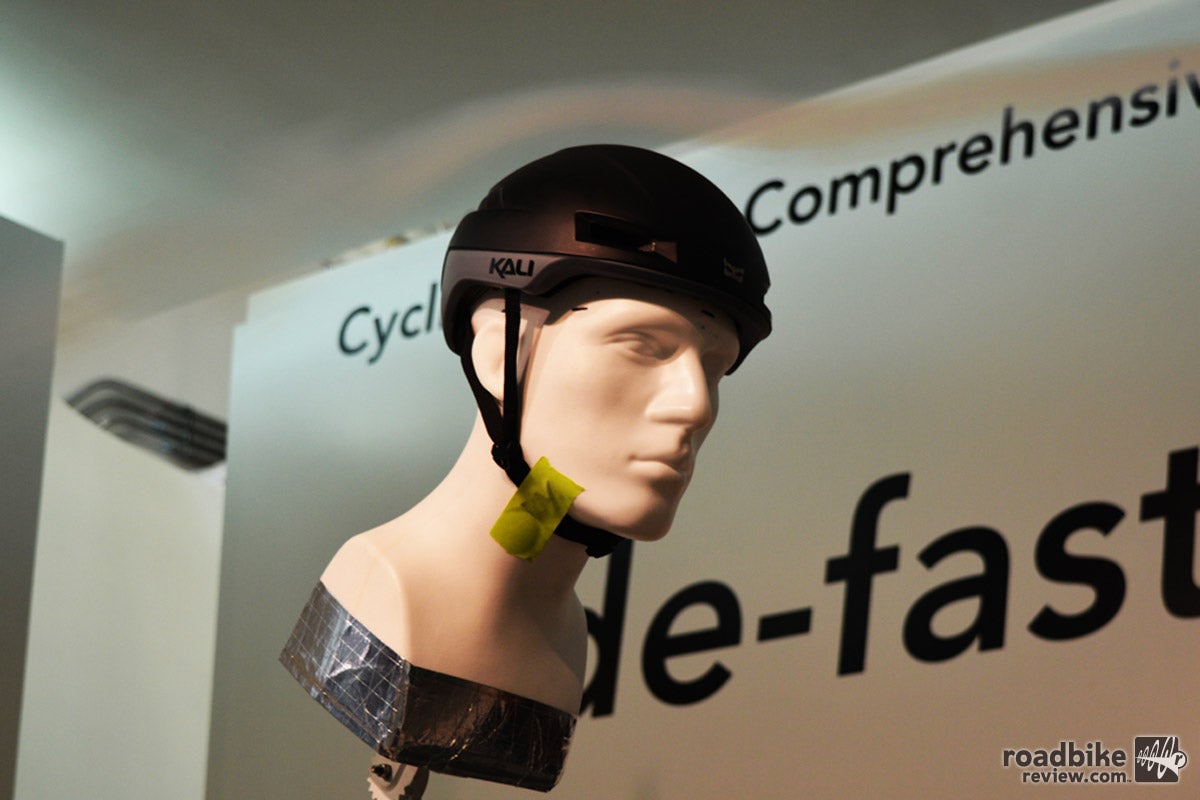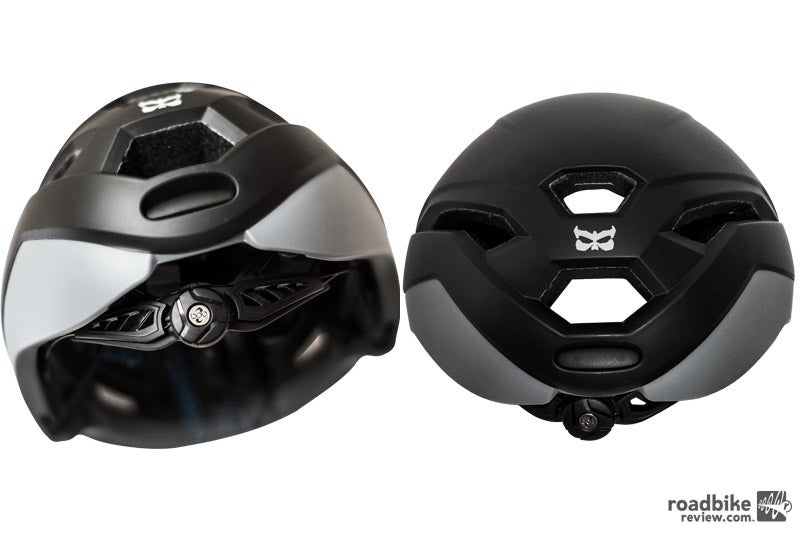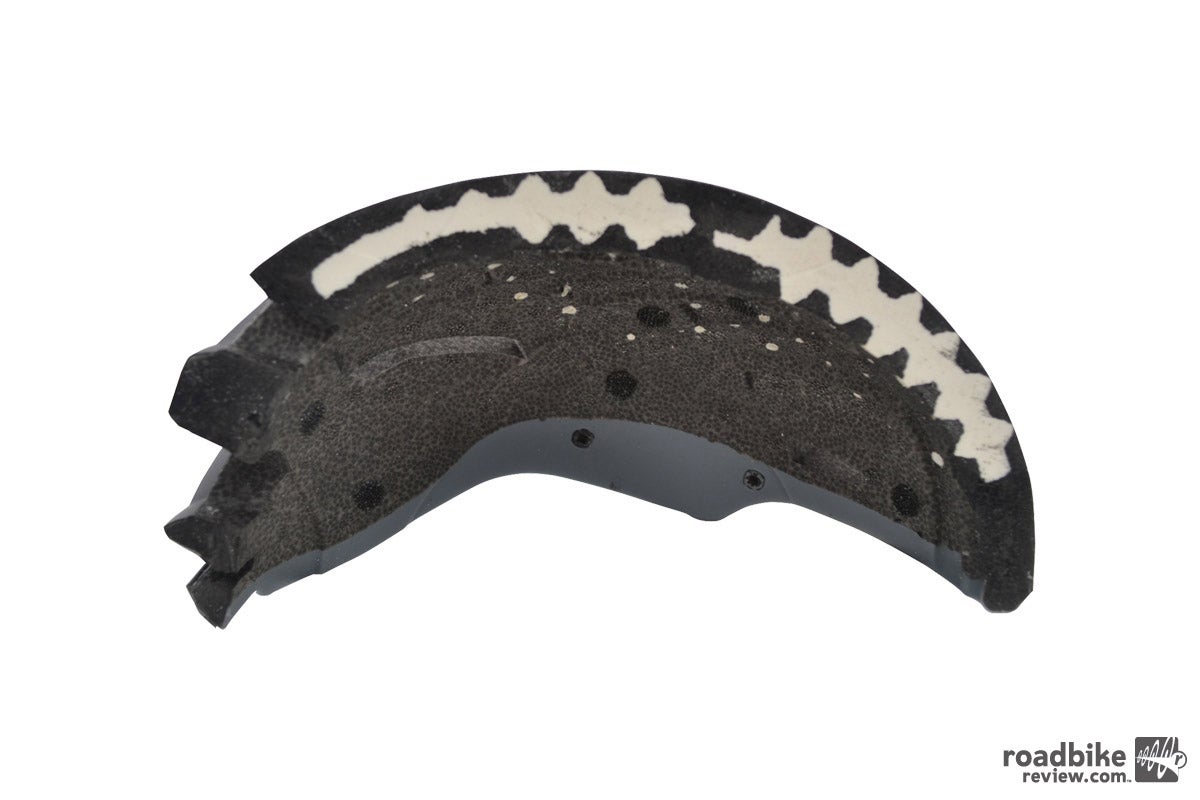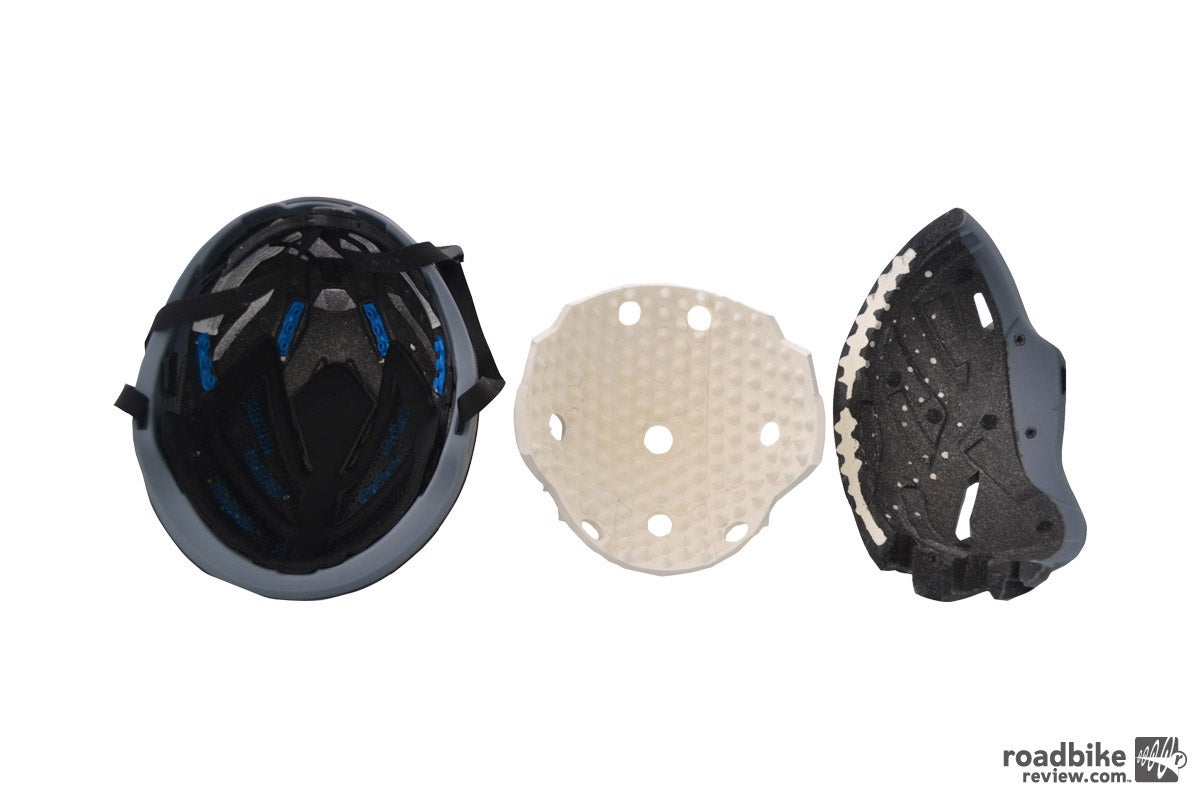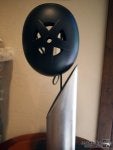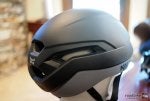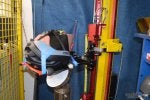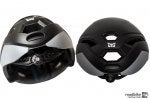
The Tava is an aero road helmet designed to reduce rotational forces and decrease head injuries. MSRP is $250 (click to enlarge).
Kali Protectives is a small Norcal based company that prides itself on creating technology that challenges what the big companies are doing. Their popular Maraka road helmet has features like SuperVent, Composite Fusion Plus and Bumper Fit which make it safer and more comfortable for many riders and racers. They are at it again with an all new aero road helmet called the Tava that introduces new versions of Composite Fusion and Bumper Fit technology that are designed to help decrease low G impact and injury from rotational forces.
If you are up-to-date on helmet technology, then you are probably aware that there are some new technologies out there designed to decrease the amount of head and brain injuries caused by rotational forces. MIPs is perhaps the most well known and well marketed. MIPs stands for Multi-directional Impact Protection system and this technology was recently purchased by Bell helmets (aka BRG Sports). Other companies who have created technologies to reduce rotational force damage in the helmet world include companies heavily involved in motocross and supercross motorcycle racing like 6-D and Leatt.
But now, Kali shows us their latest improvements and innovations to help reduce concussions and brain injuries to cyclists of all categories.
Bumper Fit 2.0
Bumper Fit is Kali's system of closed cell memory foam that is designed to harden on impact. Bumper Fit is used on most of Kali's current model line-up and it does 3 things. It helps reduce low G impact, it reduces rotational forces and it provides a more comfortable fit across a wider range of head shapes.
The new Bumper Fit 2.0 (blue pieces) are made by a company called Armor Gel out of the UK and it was developed by the same professor that developed the system used by Leatt. The blue material has been shown in testing to reduce G forces on a 1.5 meter drop by up to 12%. The lower (1.5m) drop height emulates a 10 MPH crash for a cyclist. Testing has also proven that Bumper Fit 2.0 lowers rotational forces by an average of 25%.
In addition to drop testing, the Tava was also wind tunnel tested extensively in a low speed wind tunnel in Arizona. Testing conditions included a 30mph wind which takes into account an average rider going along at a 20mph average with a wind of 10mph.
You will note that the Tava has a distinctively roundish profile and this helps keep it aerodynamic in a multitude of ever changing wind directions. Wind tunnel testing showed that the Tava not only performs well in a zero degree position, but excels in a crosswind. When compared to four leading competitors, the Tava reduced drag by an average of 50 grams at a 5 degree offset. This translates to a ½ second per kilometer, saving 25 seconds in a 50 km race.
Continue to page 2 for more on the Kali Tava and a photo gallery »
[IMG alt="Composite Fusion Squared means that the "cone-head" technology is now used in two directions."]https://www.roadbikereview.com/reviews/wp-content/uploads/2015/06/P62328181.jpg[/IMG]
Composite Fusion Squared means that the "cone-head" technology is now used in two directions (click to enlarge).
Composite Fusion Squared means that the "cone-head" technology is now used in two directions (click to enlarge).
Composite Fusion Squared
Kali was the first helmet company to use world renowned physicist Don Morgan's "Conehead" invention to provide protection for riders (the original version is called Composite Fusion Plus). Now, they have worked with Morgan to improve the cone technology with the introduction of double Coneheads (COMPOSITE FUSION™ Squared) to the market.
The cones create a "crush zone" in two directions (the riders head hitting the helmet and the helmet hitting the ground/hard surface). The two impacts are handled independently and this allows Kali to reduce the volume of our helmets and reduce weight.
Nano Core and Boa
The Tava also incorporates what Kali calls Nano Core. This lightweight material has nano fibers mixed in with acrylic that dissipates energy more efficiently than EPS does. The Nano Core helps keep the size of the helmet down, something that has plagued MIPs helmets. Smaller size helps keep the helmet aerodynamic and lowers rotational forces.
The Tava is also the first Kali lid to use the popular Boa closure system. We are long time fans of Boa and it's ease of use and ability to provide a snug but comfy fit.
Our Take
Given their reputation for innovation and technology, we look forward to getting in a test helmet for evaluation (evaluation models were available but not in our size). With it's limited venting, the Tava is definitely not meant for low speed riding but should work well under the aero conditions it is designed for. We did notice in our static examination that the Boa dial was a bit tight to adjust so perhaps production versions can address this.
Options are good and while MIPs is gaining in popularity, it's nice to know that other companies are seeking their own solutions and improvements. We look forward to seeing the features shown in the Tava migrate into more of Kali's future helmet models.
The Tava has a claimed weight of approximately 260 grams (size medium) and size SM/MD should ship by Fall and size MD/LG next Spring. The Tava has an MSRP of $250.
For more information visit: kaliprotectives.com.







